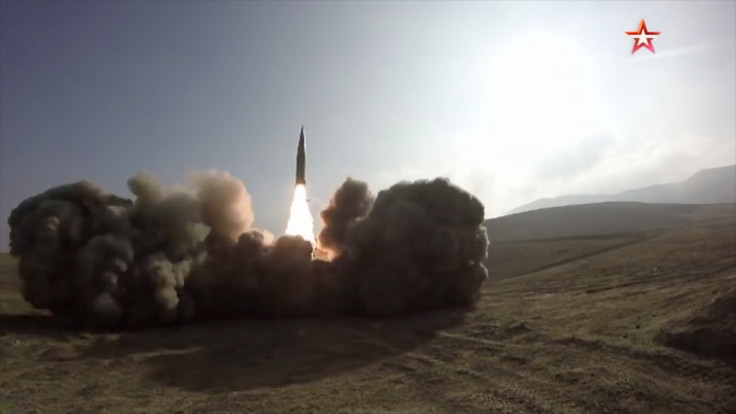Watch: Russia's new nuclear-tipped, short-range ballistic missile can fly faster than sound
The Iskander-M can reach Baltic states and Poland, which could be worrisome for Nato, say reports.
Russia's Iskander-M is a new short-range ballistic missile that is nuclear capable and can reach hypersonic speeds. Nato calls it SS-26, or Stone, and the missile has the required range to strike targets across Baltic countries and can also reach Poland.
Russia has managed to keep the new missile 'legal', thus complying with the conditions put forward in the 1987 Intermediate Nuclear Forces Treaty. This treaty ensures that no country develops land-based missiles that have a range of over 500 km, including nuclear weapons.
The US military's LRPF missiles which are currently being developed will also fall within this range, but are cruise missiles, not ballistic missiles. The main difference between the two types is that ballistic missiles are launched like rockets and the delivery stage detaches itself from the warhead, which then hurtles towards its target. While this system is normally used for nuclear weapons delivery, it can be used for high-explosive warheads as well.
Iskander-M will reach an altitude of around 163,000 feet, noted a report in Popular Mechanics (PM). Once it is primed to reach its target, it can come down at hypersonic speeds.
Iskander-M has been specifically designed to attack land targets with its reported 635 kg warhead. The warhead can be high-explosive, fuel-air explosive or high-explosive penetrator, noted PM.
The new missile has also been sent to Syria in Russia's war against the Isis, according to reports.
Development of the Iskander-M is reported to be a part of Russian President Vladimir Putin's strategy to regain the country's lost influence in Eastern Europe. The strategy involves the use of long-term military and diplomatic pressure.
Regions that have resisted the Russian influence can be easily targeted by these missile systems. From Kaliningrad, a Russian city tucked in between the Baltics, Iskander-M can reportedly target all of Poland, which is a Nato ally.
Nato, however, is not really defenceless against Russia's new weapon, PM added. The western alliance has set up what they call an anti-missile shield made of Patriot missiles that can already cover all of Turkey, in case any missiles should come out of Syria.
According to the report, a similar strategy could be used in the Baltics as well. Poland has reportedly ordered 280 Patriot PAC-3 missiles worth over $10bn (£7.55bn). Patriot missiles are designed to counter other missiles like the Iskander-M.






















